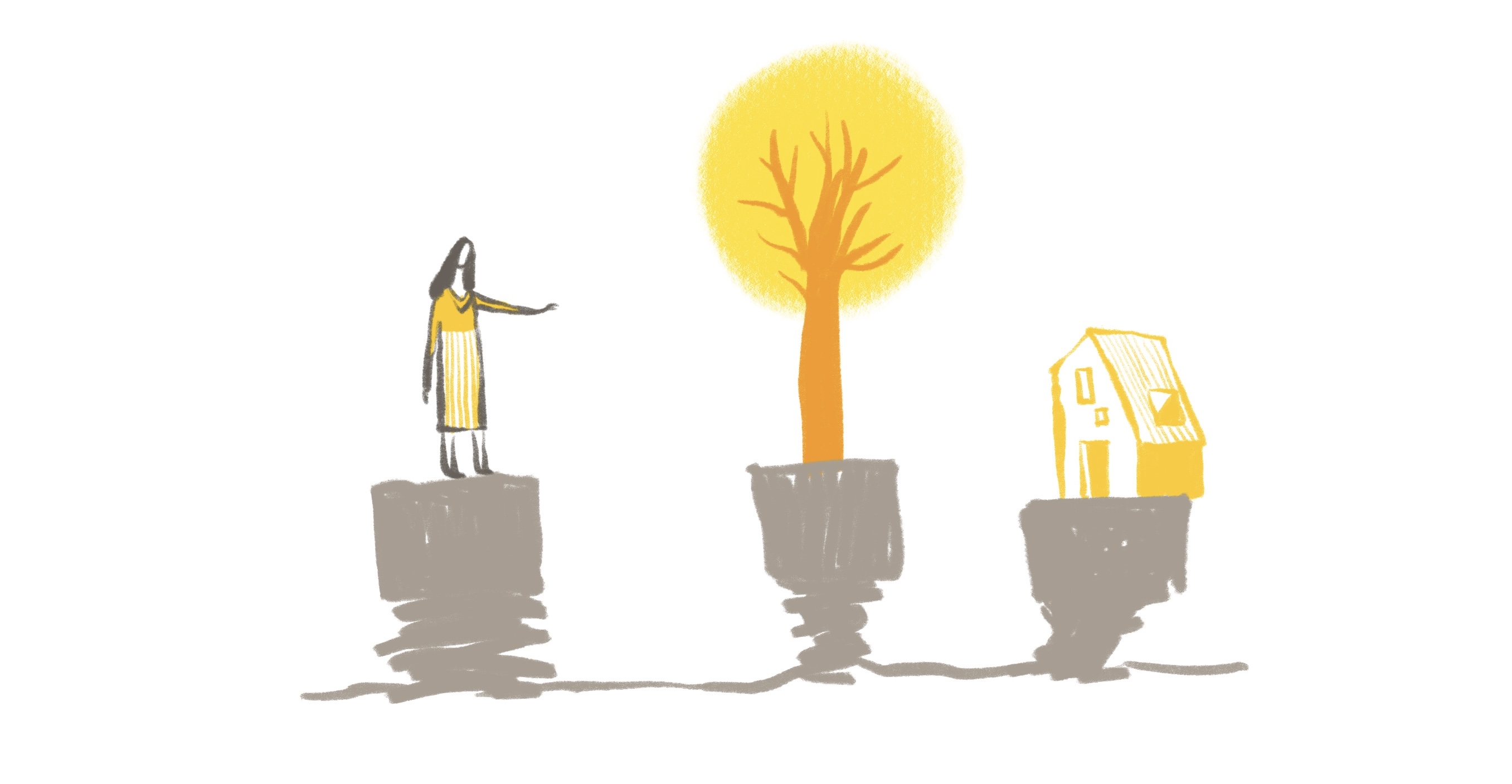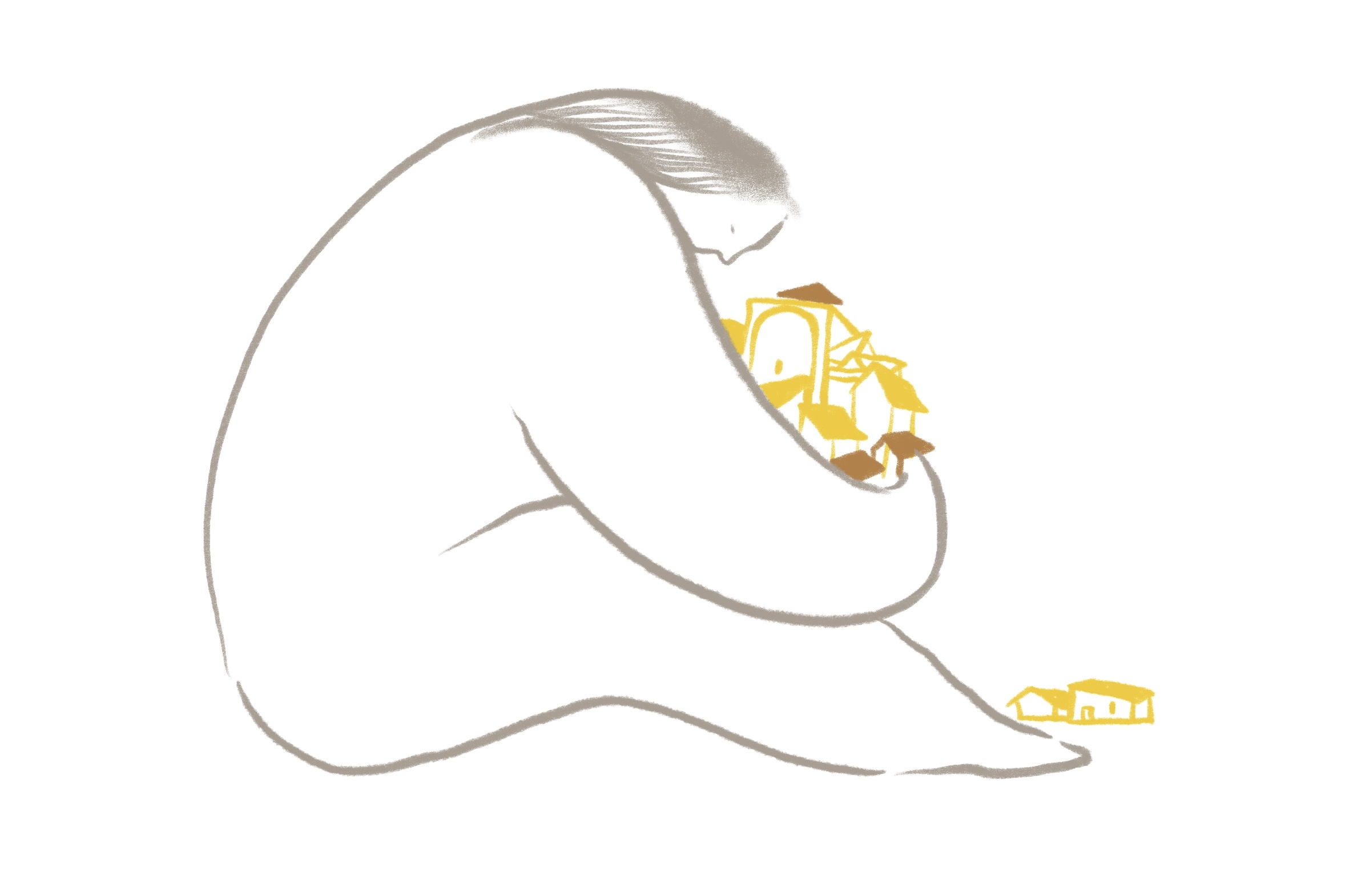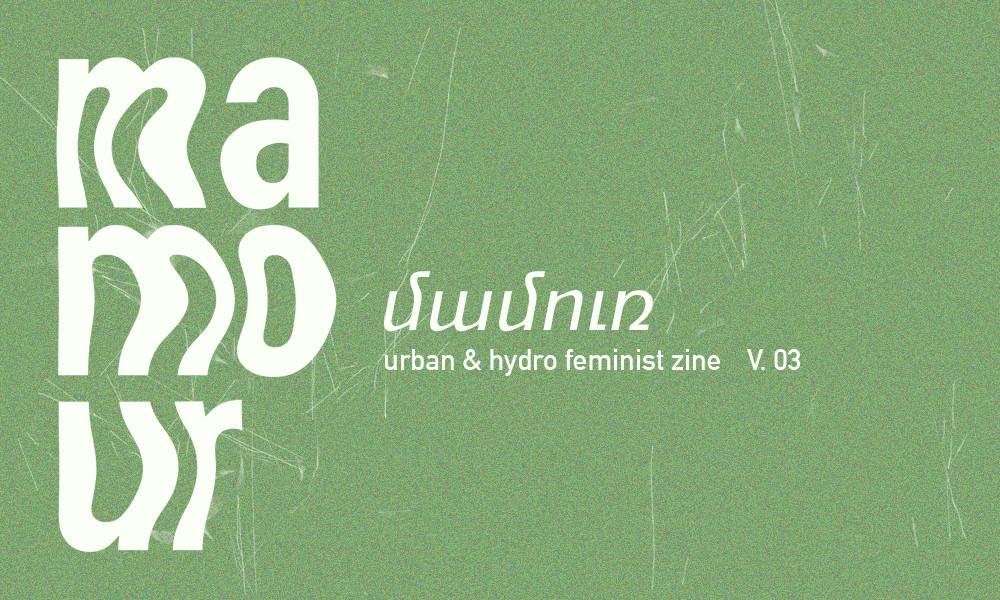Cities overshadowed by walls of exclusion, rejecting diversity and inclusivity, inevitably face the waves of resistance. These waves that bring layered reflections and formats fill the streets and flood public spaces. They come to wash away divisive boundaries, to restore the right to belong to the city, to reclaim the freedom to be part of the urban fabric and to care for it.
But how can one reclaim the city when it is fragmented by construction fences? How to return to a city that has been alienated time and again?
Reflecting on these questions, we first encounter a mental wall, a fallacy that reclaiming the city and caring for the urban space takes place solely behind closed doors and walls, accessible only to a small group of professionals and urban authorities. This misconception is further reinforced by the belief that urban processes are apolitical, disconnected from social and cultural agendas, from political contexts, or from foundational questions of democracy and horizontality. Yet the act of reclaiming a place in the city’s script is a vital space where we express our individual and collective identities, show who we are, what we strive for, and how we imagine our shared living environment.
These layers of interaction are framed by urban feminism and hydrofeminism as deeply political practices, directly linked to the third phase of the feminist theory of care: care-giving. This emphasises the tangible labour of care, the moment where care extends beyond awareness and responsibility and becomes action (Tronto & Fisher, 1990).
Such actions of care are diverse: artistic interventions questioning urban space, community initiatives, activist movements, and various currents that repeatedly rise up to voice that the city must be constantly built and transformed by its inhabitants – not through imposed top-down logic, but through principles cultivated from within. Especially within contexts of isolated and disconnected systems, where decisions about the city are made exclusively through top-down approaches, cities are often assigned such superimposed logic. Reflecting on this imposed logic, one of urbanism’s key thinkers, Jane Jacobs, deconstructing the “planner knows best” approach, argued that no urban project should override the lived experience and desires of the community (Jacobs, 1958).
This vision stands in contrast to our contemporary reality, which is largely shaped by the logics of profit, control, and exclusion, overshadowing the infrastructures and means of care. Thus, very often the power and capacity to shape our urban spaces are taken away from the hands of many and given to a few, depriving us of the opportunity to exercise care through community-rooted actions, those that have formed and continue to nourish our city’s multi-layered body.
Within this tension of opposition, urban activism has become a pivotal language to convey caregiving, having the ability to intervene and resist neglect, while simultaneously redefining the boundaries of belonging and alienation.

Resistance and dissent, as a language of care-giving, have inevitably found expression in the transformation of Yerevan’s urban environment. Over the past three decades, the city has undergone sharp and irreversible changes; public spaces, vernacular neighbourhoods, cultural monuments, and natural landscapes have been gentrified, degraded, or destroyed. These shifts have led people to engage in acts of protest and resistance. In conditions where opportunities for professional and public dialogue are scarce and even impossible, protest has become the only way to reclaim a collective right to the city – the right to shape our spaces, and in doing so, to shape ourselves.
In the multilayered and contradictory city of Yerevan, shaped by the imposition of soviet and post-Soviet logics, one of the most alienated and marginalised spaces are the vernacular neighbourhoods, without a single architect, and free from top-down planning logic, organically formed self-organised spaces, where communities themselves determine the rhythms of life.
These fluid spaces, which resist imposed logic and control, are repeatedly targeted for annihilation. Efforts to periodically subjugate them to the regular grid of Soviet urban planning or to the profit-driven impulses have generated waves of resistance. From the construction of Northern Avenue to the struggles of Firdus and Kond, the practices of these movements became the foundations of Armenian urban activism, gradually expanding the language and medium for defending and caring for the city. If, between 2001 and 2007, the urban resistance against Northern Avenue’s construction often emphasised property rights, over time, this language developed to include cultural, urban, and political concerns. The means and mediums of protest have also expanded, as has the diversity of the people taking it to the streets, ranging from the local residents to human rights advocates, artists, researchers, and independent media.
A particularly telling case in the growing activist language is the movement of Firdus – one of Yerevan’s vernacular neighbourhoods – a rare example that had resisted Soviet uniformity and serves as a living memory of multi-ethnic and multi-cultural coexistence. Since 2015, it has drawn to itself one of the most significant urban activist movements of Armenia. In the collaborative efforts of artists, urbanists, architects, activists, and residents, an interdisciplinary research perspective emerged – highlighting not only the neighbourhood’s historical importance, but also its vernacular architectural uniqueness and its role as a space that does not succumb to the logic of public/private dichotomy.
Following the city authorities’ 2015 redevelopment proposal, the Firdus: The Memory of a Place research project was initiated that uncovered and reclaimed Firdus in the residents’ own language: through oral histories, family archives, and rooted local memory. One of the most symbolic findings was the neighbourhood’s openness: its ability to welcome “others” and be a space of care. Where people found shelter and support; from communities that were displaced as a result of the Armenian Genocide to Iranian, Indian, and other migrants, and later Armenians displaced from Nagorno-Karabakh in 2020 and 2023. Within that caring fabric, the research also revealed the central role of women in Firdus. In the chapter titled “Women of Firdus,” it was emphasised that for deceased onward women were not only witnesses to the neighbourhood’s evolution but also had key roles in the formation of its architectural, social and urban networks (Amiryan & Kalantaryan, 2019).
The urban struggle that followed the process of alienating Firdus and the publication of the research was unique in its language of activism and its use of mediums. It also highlighted that the role of women is continuing to be essential to the movement. Soon, the number of women engaged in the movement grew – especially at Firdus 48, as the Painters’ House was founded by artist Siranuysh Aghajanyan and a group of other women artists.
Shaped by women’s efforts – this creative space remained vibrant even during the lull in activism caused by the 2020 pandemic and the war. With its presence it emerged as a focal point of care, not only for the artists in Firdus 48 but for the wider community. The Painters’ House became one of the essential spaces for dialogue, creation, and resistance – challenging the logic of erasure and profit-driven urban planning by asserting the neighbourhood’s cultural and communal value.
The Painter’s House after years of resisting the pressures and threats of demolition from the construction company, eventually yielded to the expanding construction pit and the artists were forced to leave Firdus (epress.am, 2024), their artistic and activist work continues to live on in the collective cultural memory – as a form of caregiving and resistance that paved the way for those who continue to fight for reclaiming the urban space.
Today, the previously unified efforts around the almost entirely demolished neighborhood of Firdus have not been in vain. They transformed into a collective memory of care for the city, one that seems to reawaken within ongoing efforts to preserve other threatened cultural layers of Yerevan. Such parallels are seen in the decentralised resistance against Kond’s redevelopment, expressed not only through alternative architectural proposals and research but also cultural and artistic interventions. In recent years, the Kond Festival became a powerful moment to reimagine, reinterpret, and reaffirm the neighbourhood. The Kond festival, organised by “Tech Degh” cultural initiative, has become a unique space of dialogue for Kond’s residents, architects, urbanists, researchers and artists. Here, the presence of cultural practitioners does not overshadow, but rather complements the voices of those who inhabit the place. Within the framework of the festival, the active participation of its residents reflects one of the key perspectives of caregiving for the city: the necessity of participation and community-based engagement (evnmag, 2022).

In the ever-shifting body of the city, within the geography of displaced spaces, public areas, in particular, Yerevan’s green and blue spaces have become evidently more and more vulnerable. Especially in the post-Soviet period, driven by profit-oriented development policies, these zones are being seized and destroyed, giving way to construction, turning from public into private, from accessible into inaccessible.
The growing threats around public spaces not only expose the positioning of green and blue zones within the urban landscape, but also underscore the fragility of environments meant for cultural exchange and dialogue. These seem to diagnose issues of horizonality and inclusivity within the societal structures, revealing the very challenges that threaten them.
It is no coincidence that one of the most vivid pages of Yerevan’s urban activism formed precisely around a public space – the movement to protect Mashtots Park, and the victory it achieved. This successful example highlighted the interconnection between the individual and the collective, the transformative power of personal responsibility and solidarity. It was a process that not only reshaped the city but also the communities and individuals at the heart of it. This experience revealed the profound entanglement between the public and the personal – where the transformation of one inevitably affects the other. One of the active participants, Ruzan Grigoryan, recalling the days spent in the park, noted: The process of being active in civic life also helped me reinterpret my personal life. (Focus, 2014).
This fight for the right to the city reflects what David Harvey reminds us: “The question of what kind of city we want cannot be separated from the question of what kind of people we want to be.” (Harvey, 2012) The movement around the park and its success became not only a strong foundation for urban activism but also for activism in Armenia more broadly, demonstrating that the proclamation of this right is rooted not only in physical space but also intertwined with social ties and identities.
The aspiration to create a just, caring, and inclusive space goes beyond the boundaries of the movement itself, becoming a successful precedent and a language that shapes new civic resistance movements aimed at protecting public spaces and natural landscapes, and defending the right to belong to and relate to them.

Care for the city, alongside the processes that threaten it and resist those threats, is now particularly focused on preserving the natural landscape. Numerous cultural and educational initiatives, ecological projects, and individual efforts are increasingly emphasising the importance of green and blue spaces as ecosystems that shape microclimates, mitigate urban heat, and soften the harshness of the city. As construction activity intensified in recent years, particularly through urban deforestation and the replacement of trees, public discourse has increasingly turned toward the protection of green zones.
In parallel to these, concerns related to water bodies and air remain scarce, even though these issues are equally urgent. Urban activism in Armenia has been so far failing to mobilise effectively around the protection of these wrongfully seen as spaces of absence. In the absence of such sensitivity, it is no surprise that Yerevan residents have in recent years directly faced flooding, rising air temperatures, and increased pollution levels. Water bodies are often perceived as distant, constantly receding flows, and so too is their pollution, which becomes just as easy to overlook. Though when it comes to air, we encounter a different kind of invisibility: shaped by air’s intangible nature. The philosopher Luce Irigaray, a key figure in hydrofeminist thought, addresses this very issue. She invites us to consider how Western thought has marginalised the elemental, regarding it as secondary, emphasising instead that air and water flow through and between bodies, constantly transforming, connecting, and merging us. (Irigaray, 1999) Seen only through scientific measurement, this element of air remains invisible, and when measurements arise, it is rarely for prevention, but mostly a reaction to damage that has already occurred. Its invisibility breaks in the moment that we gasp for air, cling to water, or are confronted by the thickening grey fog on the horizon.
Yet these spaces and bodies, particularly air, are also cultural and political spaces. As architect Nerea Calvillo highlights, air must be made visible and represented in diverse ways, challenging the very same idea that the invisible is immaterial. She urges us to ask why some pollutants are monitored while others are ignored. Calvillo calls on us to reimagine air not as passive or neutral, but as a common infrastructure, a source that sustains life (Calvillo, 2023).
Speaking about this political space becomes especially vital in the context of escalating environmental crises, where, despite mounting challenges, there seems to be no emerging wave of resistance on the smog-filled horizon. This is not just a result of air’s elusive invisibility; rather, it points to a broader decline that has presumably hit urban activism in Armenia.
This vital form of caregiving – urban activism, which once played a pivotal and preventative role, now appears to be in retreat. This is not simply a result of failed efforts or a lack of urgent issues. Rather, it seems to stem from the post-war social and political events, where, in a field of meaninglessness, care and resistance themselves appear to have lost meaning.
Today, as the city is once again being shaped by logics of force, control, and exclusion, through gentrification that continues to dominate our lived space, and as public participation is increasingly sidelined, there is a greater need than ever to revive the fading waves of urban activism. The memory of collective care, the past experiences of struggle, the ethic of care and creativity, legal battles, and community self-organisation must become the foundation upon which a new expression of communal care is formed: a movement to shape a just city, a space of care for all. Care for the environment must reclaim its essential language of expression, fostering both personal and communal responsibility toward the future.
Amiryan, T., Kalantaryan S. (2019) Firdus: The Memory of a Place. CSN lab. Yerevan.
Jacobs, J. (1958). Downtown is for People. The exploding metropolis, 168, 124-131. http://innovationecosystem.pbworks.com/w/file/fetch/63349251/DowntownisforPeople.pdf
Focus (2014) մարդ. Ռուզաննա Գրիգորյան [Video]. Youtube. ttps://www.youtube.com/watch?v=ZNEQSganegs
Irigaray, L. (1999). The forgetting of air in Martin Heidegger. University of Texas Press,
Calvillo, N. (2023). Aeropolis: Queering Air in Toxic-Polluted Worlds. Columbia Books on Architecture and the City.
Jacobs, J. (1992). Death and Life of Great American Cities. Vintage
Tronto, J. C., & Fisher, B. (1990). Toward a feminist theory of caring. In Circles of care (pp. 36-54). Suny Press.
Harvey, D. (2012). Rebel cities: From the right to the city to the urban revolution. Verso books.
«Կոնդի փառատոն». (2022). evnmag https://evnmag.com/articles/kondi-paraton-aneliqner.html
Ֆիրդուսի կառուցապատումը չխնայեց նաև «նկարիչների տունը» (2024) epress.am. https://epress.am/2024/11/20/firdus-artists-house.html

